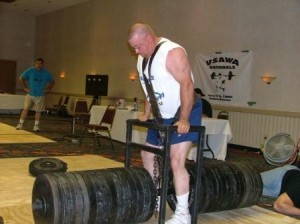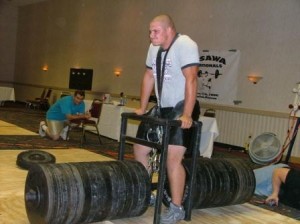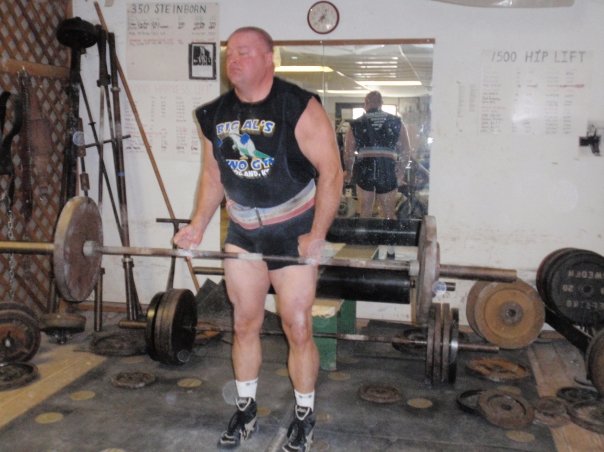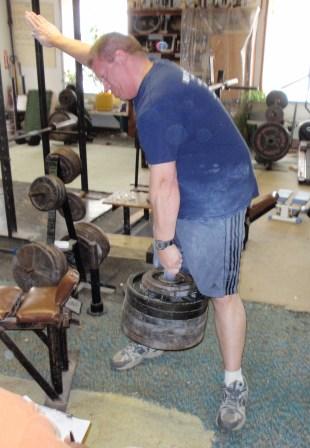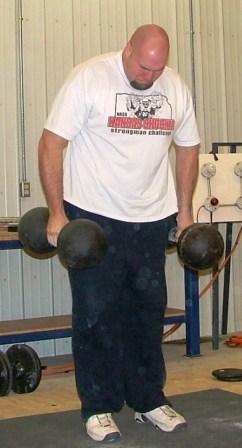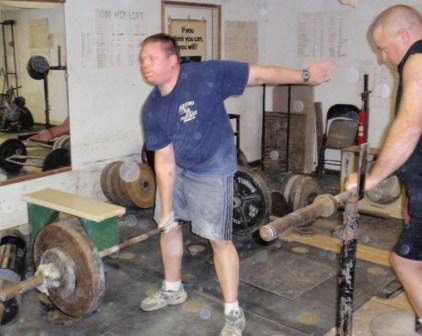Harness Lift:Part 1
by Thom Van Vleck
The Harness Lift is one of the more intriguing lifts in the USAWA. How often can a person lift a ton….literally! Let’s review the Harness Lift rules from the USAWA rule book: A Heavy Lift Bar is used in this lift. A harness is also used, which fits over the shoulders and around the waist. An adjustable chain and hook is attached to the harness so it may be attached to the Heavy Lift Bar. The width of the harness must not exceed 4 inches around the waist and 3 inches over the shoulders. The lifter is also allowed to use hand rails to support the arms during the lift. The hand rails may be of any design. A hand rail does not need to be used, and the lifter may support the arms on the legs during the lift. The lifter assumes a position in which the lifter is straddling the Heavy Lift Bar. Width of feet placement is optional, but the feet must be parallel and in line with the torso. The feet must not move during the lift, but the heels and toes may rise. The lifter may adjust the chain length to his/her preference prior to the lift. The lift begins at the lifter’s discretion. The lifter is allowed one test lift to check the balance of the weight and to make adjustments to the chain length. The lifter will stand and lift the weights from the platform. The shoulders and torso do not have to be upright upon the finish of the lift. The legs must straighten, but the knees do not need to be locked. Once the weight is motionless, and the plates on both ends of the bar are off the platform at the same time, an official will give a command to end the lift.
Steve Schmidt is responsible for some of the most amazing Harness lifts of all time. At the 1988 Backbreaker he did 3500lbs in the 105kg class and in 1992 Backbreaker he did 3315lbs weighing in some 10kg less in the 95kg class. But the best of all time, was at the 1991 back breaker where Steve did 3515lbs in the 100kg class! Another amazing Harness lifter is Joe Garcia.
But to me, my favorite memory of the Harness lift took place when I was a head judge at the 2006 USAWA Nationals. There was a lot of big Harness lifts that day but a real battle emerged between Al Myers and Ian Reel. Al was the wiley veteran and Ian was the young rookie. It was a battle for the ages! I was extremely impressed with Ian (I’ve come to expect big lifts out of Al!). I recall getting down at floor level trying to check for clearance and seeing that heavy bar bend like a bow! That was some serious weight! When the dust settled, Ian (who was officially lifting in the 110kg class) equaled Al’s 2800lbs (Al was in the 115kg class) so by virtue of bodyweight, I have to give youth the victory on this one. I hope when Ian is done with his collegiate throwing career he makes a return to the USAWA….I hear he’s “filled out” now!
